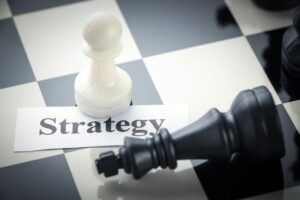
Whether your goal is to acquire leads, boost sales, or increase conversions, content is vital to moving people through the buyer’s journey. From bylined articles to informational videos, content helps prospects learn about brands and gather information about their products and services. It also helps companies position themselves as experts in their fields, building credibility and trust with target audiences. Content serves as the primary vehicle for educating, engaging, and guiding potential customers at each stage of their journey to make a purchase.
Prospects and clients need different types of content depending on their stage in the buyer’s journey. The type and the timing of content delivery matters, especially when marketers leverage it to move a prospect through the sales process. It’s also important to consider the shelf life of that content and how long it remains relevant to target audiences. By developing a diversified and consistent content marketing mix, marketers can reach prospects and clients at every stage of the buyer’s journey and effectively guide them through the sales funnel.
Three Types of Content for the B2B Buyer’s Journey
There’s no question that different types of content serve different purposes for organizations and their diverse audiences. One way to consider these content types is through their lifespan and relevance to the reader.
Long-lasting, Evergreen Content
Evergreen content is marketing content that remains relevant, useful, and search-optimized for a long period of time. B2B evergreen content focuses on valuable expertise that’s built to last. Examples include how-to articles, product reviews, white papers, books, e-books, and essential guides. “Writing about the news of the day might get your signal boosted to a larger audience,” writes Bill Sherman, COO of Thought Leadership Leverage, “but remember, it won’t do you any good unless that audience will be interested in, buy, and use your content. Explore the history or origin of your content, focus on frequently asked questions, or describe challenges you’ve seen business leaders face.”
When developing evergreen content, consider topics such as case studies, step-by-step guides, tutorials, checklists, industry glossaries, resource lists, comparison charts, and best practices.
Current and Trending Content
Evergreen content is a powerful long-term asset. However, it’s equally important for brands to position themselves as a part of the current conversation in their industries. This is a key attribute of any thought leader. Content that addresses today’s topics showcases well-informed, advanced expertise and connects authors with the networks, stakeholders, and prospects who need their insights most. This type of content does not have a long shelf life and may need to be updated or removed over time.
Organizational news can be shared through press releases, news outlets, case studies, and social media. Content addressing industry topics and trends is best accomplished through bylined articles, interviews, podcasts, webinars, and blogs. Editors of trade magazines and industry journals are always looking to publish content about current trends, innovations, and best practices contributed from experts in the field.
To capitalize on trending topics, leverage social listening tools to identify relevant and current topics. When creating content on current and trending topics, it’s important to provide unique and valuable insights to target audiences. This means going beyond what everyone else is already saying and adding unique insights to the conversation. Accomplish this by taking a deeper dive into a larger concept by conducting research and interviews with experts. Or consider challenging the status quo by offering a fresh perspective on a common issue.
Frequent and Personalized Content
This type of content guides potential customers through the sales funnel when they are close to making a purchase decision. Companies can also leverage it to keep current customers informed and feeling valued. Examples include email newsletters, webinars, and social media posts. This type of content can also include content personalized to a specific stage or buyer persona such as FAQs or product demonstrations.
The effectiveness of personalization requires clearly defined and segmented audiences. Accomplish this through a highly targeted email list or segmenting social media followers. “Traditional approaches to segmentation include using attributes such as industry, revenue or size, geographic location, growth rate,” writes Laura Patterson, president of Vision Edge Marketing, “however, needs-based segmentation is another approach.” By defining audiences this way, brands can provide content that directly addresses needs, pain points, and challenges, especially when buyers are close to making a purchase decision.
When creating content for specific audiences, it’s critical to tailor content to each group. Use language, images, and stories that resonate with each segment’s interests and needs. Personalized content allows brands to engage with audiences on a deeper, more meaningful level. This builds a loyal following of buyers.
Empower Buyers Through Strategic Content

Effective content isn’t a random assortment of brochures, press releases, and sales promotions. Instead, strategic content helps target audiences learn about your brand, benefit from your unique insights, and ultimately create a long-lasting buying relationship. Of course, not every prospect or client has exactly the same needs. It’s important to define buyer personas and provide the right content at the right time through the right channels. Remember one type of content cannot do it all. A consistent schedule that delivers the right type of content to the right audiences at the ideal time through a variety of channels creates avenues for prospects at every stage of the sales funnel to become empowered buyers.

